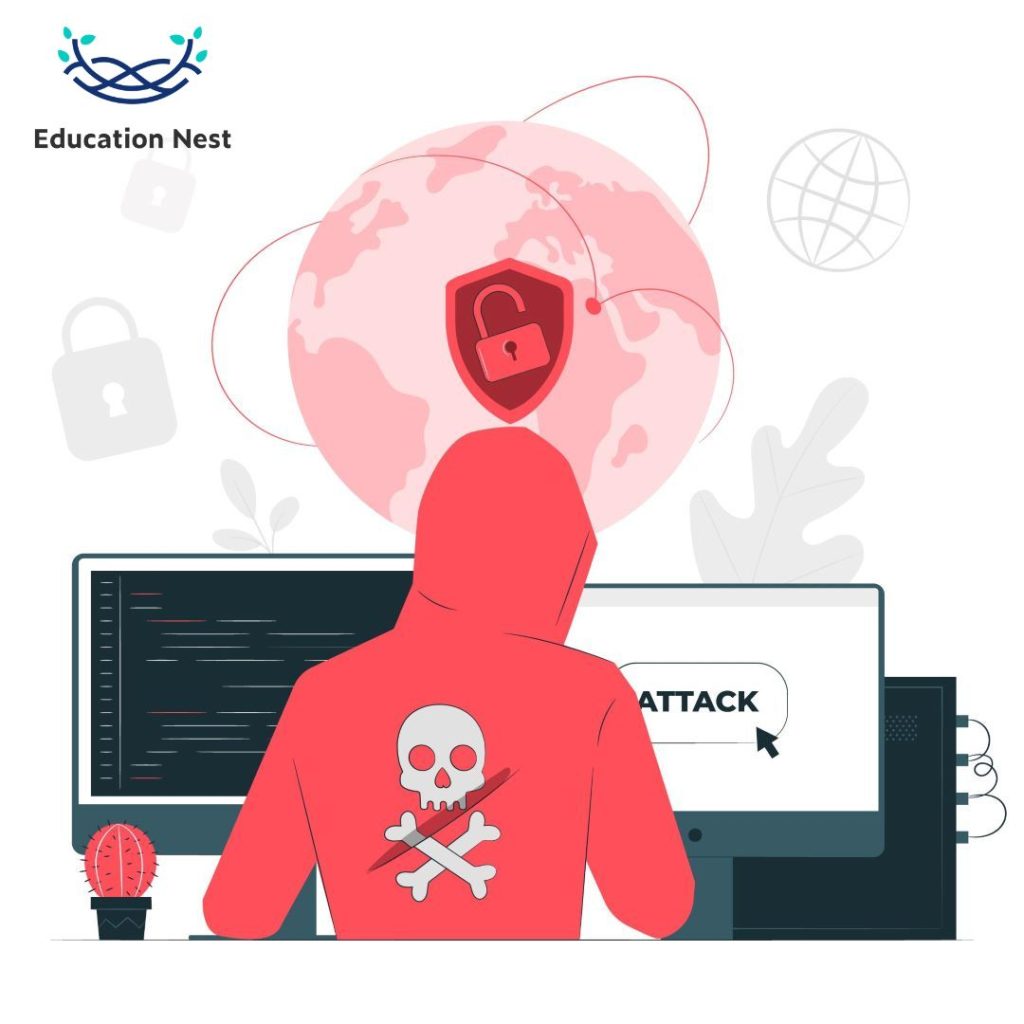Cybercriminals use different methods, like phishing and pharming, to trick people into giving up sensitive information or downloading malware. With the rise in cyber attacks, it is better to know its types. Here, in this blog, we will be discussing the two types of cyber threats, i.e., phishing and pharming. We will be exploring the difference between phishing and pharming with examples. Even though cyber threats have similarities, understanding and differentiating between them is always favorable.
First, we will understand the meaning of phishing and pharming and then move forward. To begin with, let’s learn what phishing is.
What is Phishing?

Phishing attacks are an illegal method to get sensitive information from users who don’t know what’s going on. Cybercriminals send fake emails to their targets to get them to open unsafe attachments or click on harmful links. After being tricked, victims click on the malicious file or link in the email. This makes it easy for attackers to steal private information about users.
Most of the time, harmful software is put on a user’s device through phishing, which takes advantage of software or security flaws.
A phishing attack doesn’t have to use email. Smishing and vishing are two other types of social engineering where attackers pretend to be reliable sources of information to get their targets to give up sensitive information.
Many data breaches in the past can be linked to phishing attacks, which are unfortunately too familiar.
Certainly, by now, you must have understood what phishing is. Now, let us move forward and understand pharming.
What is Pharming?
Pharming is a sophisticated form of social engineering in which an attacker pretends to be an actual website to steal the victim’s login information. Simply put, it sends users to a fake but malicious website to get them to give up sensitive information that can then be used for unlawful activities.
In pharming, malware is put on the victim’s computer, or they are accidentally sent to a fake website. These websites can easily trick people who aren’t paying attention.
The main goal of a pharming attack is to get private information like passwords, user names, and credit card numbers. If the hacker has taken over the website’s domain name or DNS, even clicking an actual link may take the user to the fake site.
Pharming attacks are especially dangerous because the user cannot know if the website they are using has been hacked before they give away private information.
When a user goes to the website, they will see a window that asks them to enter their login information. This is how pharming works and how it can get to personal information.
Unquestionably, now we understand the meaning of pharming and phishing. Now, it will be easier for us to understand what’s the difference between phishing and pharming.
Differences between Phishing and Pharming
Now that we know how phishing and pharming work, let’s examine the most important differences. Both phishing and pharming are types of cyberattacks, but they work in different ways.
You need to know about the Domain Name System (DNS) to understand the differences. The Domain Name System (DNS) is the hacking tool of choice in a pharming scam. Pharming is done at the DNS server level, while phishing is done with fake websites that look real.
In contrast to phishing, pharming doesn’t use tricks like fake links to trick people. Instead of changing the URL a user types in to send them to a fake website, a pharmer would work with the DNS server to send them to a fake website, making them feel good. If the hacker can launch a DNS attack, it will change the way web traffic flows to the targeted website in a big way.
State the Differences between Phishing and Pharming
| Framework | Phishing | Pharming |
| Definition | The attacker tries to use illegal electronic communication to get users’ private information. | A more sophisticated method of stealing login credentials by tricking users into visiting a fake website. |
| Objective | Using email or instant messaging to scam people individually. | To send people from one website to another that looks the same in order to steal information. |
| Technique | A fake email has a link to a website that asks users for personal information. | Users are sent to a different website after the DNS server is hacked. |
| Medium | Instant messaging, Fax and Email. | Web sites, home router, DNS server, etc. |
Without a doubt, you must have understood the main differences between Phishing and Pharming.
Finally, let’s help you understand how to avoid phishing and pharming.
Also Read:
How to Stay Safe Online: Understanding Cyberstalking
Measures for Avoiding Phishing and Pharming
No matter the differences between the two, phishing and pharming are significant threats to online safety. To stay safe from these dangers, always double-check the HTTPS of any links or attachments you get through email.
Cyber security awareness is also important to spot and avoid online dangers. Cybercrime can also be stopped by not clicking on links that look sketchy.
Here are some things you can do to avoid falling for phishing and pharming scams:
Phishing-
- Do not download files from unknown senders.
- Never click on unknown links.
- Do not reveal private information like bank accounts or social security numbers in an email or text.
- Using an antivirus program is a must.
Pharming-
- Always use an Internet Service Provider (ISP) you know and trust.
- Connect to trusted DNS servers via a VPN.
- Two-factor authentication should always be used when offered by a website.
- Never click on unknown links.
Conclusion
This blog post is meant to explain the difference between pharming and phishing. Most people have heard of phishing, a type of social engineering in which people are tricked into giving out personal information on a fake website. However, pharming is much more complicated and hard to spot.
